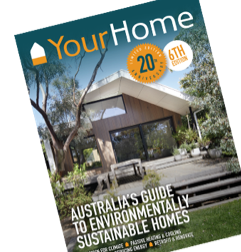Search
-
Key points
- Embodied energy is a calculation of all the energy that is used to produce a material or product, including mining, manufacture and transport.
- To achieve a home that is truly low energy, it is important to consider embodied energy when choosing materials and construction systems.
-
Key points
- Your construction system is the combination of materials used to build the roof, walls and floor of your home.
- Different construction systems suit different climates and designs, and will also have varying levels of durability, maintenance and cost.
-
Key points
- Cladding is a material that is attached to the exterior of your home’s walls to form an outer weatherproof skin to the home.
- Cladding may be made of timber, masonry, fibre cement or metal. Newer products may combine several materials, such as insulated aluminium panels or poly-timber composite boards.
-
The materials used in your home’s construction have a significant impact on its performance, durability and energy use. Careful analysis and selection of materials, and the way they are combined, can improve the comfort and cost effectiveness of your home, and greatly reduce its lifecycle environmental impact.
-
Family home built on existing foundations using passive solar principles, local materials and high-density insulation.
-
Key points
- Australia has various building rating systems.
- The rating systems are used to assess energy efficiency and other aspects of sustainability for existing buildings or new building designs. Some rating systems assess building components.
-
Key points
- Precast concrete is poured into a reusable mould or ‘form’, cured in a controlled environment, then lifted into place.
- Precast concrete can be poured on site and then lifted, or poured off site and transported to site before lifting.
-
New build using passive solar design and solar technology, and lightweight materials, on a sloping site.
-
New home designed for future recyclability with passive design principles.
-
Key points
- Zero energy homes have an energy-efficient thermal shell and appliances, and when combined with renewable energy systems, over a year their total energy production minus their total energy use equals zero.
-
Key points
- Mud bricks are one of the oldest building materials in the world.
- Mud bricks usually only require earth and the energy of the sun, so have very low embodied energy and environmental impact.
- A mud brick is made by mixing earth with water and fillers such as straw, placing it in a mould, and waiting for it to dry.
-
New house using passive solar design, including a combination of heavy and lightweight materials, to overcome the constraints of a narrow block where the longest side faces west.
-
New build, using the 3-bedroom Banksia Design For Place home plan with minor adjustments.
-
Key points
- Concrete slab floors suit many home designs and, when combined with appropriate passive design, can provide thermal comfort and reduce energy use.
-
A house that aims to balance energy efficiency and material selection to achieve affordability and sustainability.
-
New family home on a narrow block using passive solar design principles.
-
New home using solar hot water and solar photovoltaic (PV) technology.
-
Six new townhouses using double glazing and solar photovoltaic (PV) systems


